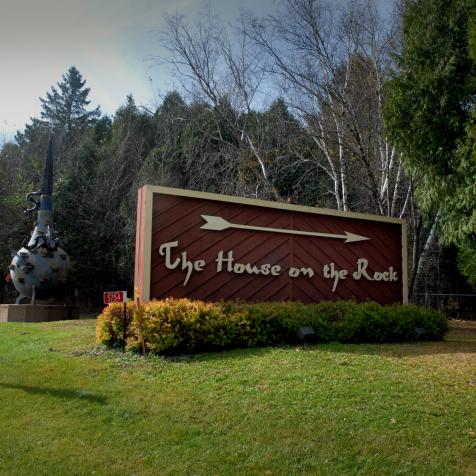
There May Be a Long-Lost Gold Mine in the Arizona Mountains
For more than a century, adventurous souls have sought the Lost Dutchman Mine, and since 1891, more than a hundred people have claimed to find it. But the mine remains shrouded in mystery, so much so that it might not exist at all.
Get-rich-quick schemes are as American as the Fourth of July. Long before Who Wants to Be a Millionaire and grifter-socialite Anna Delvey, we had the Gold Rush — and even today, plenty of Americans are still fixated on an either long-lost or fictional gold mine in Arizona's Superstition Mountains. For more than a century, adventurous souls have sought the Lost Dutchman Mine, and since 1891, more than a hundred people have claimed to find it. But the mine remains shrouded in mystery, so much so that it might not exist at all.
A Murky Origin Story
In the late 1800s, just after the Gold Rush, a German prospector named Jacob Waltz reportedly started showing up in Phoenix with a lot of gold ore. Like, a noteworthy amount. (Waltz definitely existed, and was definitely German, but his ore is not as well documented.) He reportedly said it came from a secret mine in the Superstition Mountains. Some think this mine was first excavated by Mexico's Peralta family, then commandeered by Apaches or simply abandoned. What really matters, though, is that Waltz — the namesake Dutchman, or "Deutsch" (German) man — wouldn't reveal the mine's location. Then, in 1891, he died .
At the time, he was living in Phoenix, reportedly on land owned by Julia Thomas, a local bakery owner. They were friendly, and he gave her hints about the mine's location. When Waltz died, the 29-year-old Thomas sold her bakery, got a group together, and went searching for the mine. Tragicomically, she and her team passed over two enormous gold mines on their search for the Lost Dutchman Mine, which they didn't find. Then, to recoup the cost of the failed expedition, Thomas started selling maps that she claimed would lead people to the mine. As you probably guessed, they were fakes.
Misinformation and rumors about the mine grew so ubiquitous that in 1895, they made it into the San Francisco Chronicle. The story is made up of an assortment of hints about the mine's location. It's near a 1,000-foot-tall rock tower! It's near a cabin in a cave! Today, we might expect more detail; back in those days, the story was enough to fatally pique the curiosity of an amateur prospector, Adolph Ruth.

Get Rich or Die Trying
Ruth was an amateur prospector in the that he had never found gold but had been seeking it for it for years. He and his son had searched California's Borrego Desert for gold, but they found none. Ruth injured his leg so severely in the process that he developed a lifelong limp. But when his son, who worked in Mexico, found a map that might lead to an Arizona gold mine, Ruth couldn't resist. At age 66, he went to the Superstitions alone, over the objections of his son and family. Just one day into his journey, he disappeared.
But Ruth did indeed find the Lost Dutchman, according to ... a message in a bottle. In 1932, campers found a note from him bobbing in Arizona's Salt River. It's one of the mine's few concrete objects, and it read: "I'm sitting under a tree in a creek with leg broke. I've got to have help quick. Finder of this note please give to Howard Peterson. P.S. Have found the lost Dutchman. Ruth"
Unfortunately, Ruth was dead by the time his note was found. His body and supplies were found in the mountains; the mine was, of course, not, though the area near his corpse was intensively searched. A medical examiner ruled that Ruth died of natural causes (i.e., that broken leg, plus starvation), but some maintain that he was murdered because he knew too much about the legendary mine.
Today, the consensus among geologists is that the Superstitions are unlikely to contain a secret gold mine. However, the Lost Dutchman remains much discussed in Arizona. Several trails through the Superstition wilderness reference the mythical mine: there's Treasure Loop trail, Peralta Trail, and Dutchman's trail. There's even a museum exhibit about the mine in the area, which tasks itself with "the separation of fact from fiction" — fitting for a mine that's right on the border between mythical and real. So far.
This article first appeared on Curiosity.com. Click here to read the original article.
Catch Up on Gold Rush
See MoreGold Rush
Follow the lives of ambitious miners as they head north in pursuit of gold. With new miners, new claims, new machines and new ways to pull gold out of the ground, the stakes are higher than ever. But will big risks lead to an even bigger pay out?
Gold Rush: White Water
This is gold mining at its most extreme. Gold miners Dakota Fred and his son Dustin are determined to make a fortune no matter the risk. But to find the big gold payout, they’ll put their lives on the line by diving deep beneath the raging waters of one of Alaska’s wildest creeks.
Gold Rush: Parker's Trail
Parker Schnabel and his friends pay tribute to the legends before them and attempt the Klondike Trail of 1897. Not only is it 600 miles of mountains, lakes and rivers, but leaving late in the season means the winter may derail their plans.





















